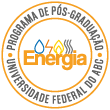Banca de QUALIFICAÇÃO: YURI OLIVEIRA LIMA
Uma banca de QUALIFICAÇÃO de MESTRADO foi cadastrada pelo programa.DISCENTE : YURI OLIVEIRA LIMA
DATA : 26/07/2021
HORA: 16:00
LOCAL: Remoto
TÍTULO:
ANALYSIS OF ENERGY MODELS IN PNEUMATIC TRANSPORTATION: APPLICABILITY FOR A NEW TYPE OF CONVEYORPÁGINAS: 54
GRANDE ÁREA: Engenharias
ÁREA: Engenharia Mecânica
SUBÁREA: Fenômenos de Transporte
RESUMO:
Pneumatic conveying is widely used by several industries. Its advantages include flexibility in transporting routes, long-distance conveying, reduction of pollutants, when compared to mechanical conveying. Among its disadvantages, it is possible to highlight its high energy consumption due to the use of large amounts of compressed air. Studies to improve the efficiency of pneumatic conveying systems are constantly carried out, but the lack of unified models indicates the need to analyze different models. Among these studies, the energy efficiency models stand out, which despite being scarce in the literature, are selected from more explored models, such as pressure and flow models. Pressure, friction, and velocity gradient models were analyzed to confront experimental data in a pneumatic conveying system with a prototype solid feeder developed by Zeppelin Systems Latin America, called Batchpump. This prototype operates in a similar way to conventional pressure vessel, for transporting material in the form of 100L batches. It was tested in a pipeline with 133m long, 3 inches in diameter, 4 bends of 90° and 180°, all with long radius, to transport ground calcite limestone, as a case studied. It is expected to identify the models and variables that can optimize the energy efficiency of the pneumatic transport systems, finally, to obtain optimal points in terms of energy efficiency of this system.
MEMBROS DA BANCA:
Presidente - Interno ao Programa - 1544284 - LUIS ALBERTO MARTINEZ RIASCOS
Membro Titular - Examinador(a) Externo à Instituição - MARIA DO CARMO FERREIRA - UFSCAR
Membro Titular - Examinador(a) Externo à Instituição - LUCAS MASSARO SOUSA
Membro Suplente - Examinador(a) Interno ao Programa - 2605733 - SERGIO RICARDO LOURENCO
Membro Suplente - Examinador(a) Externo à Instituição - RICARDO BORGES DOS SANTOS - ZEPPELIN




